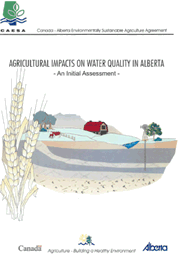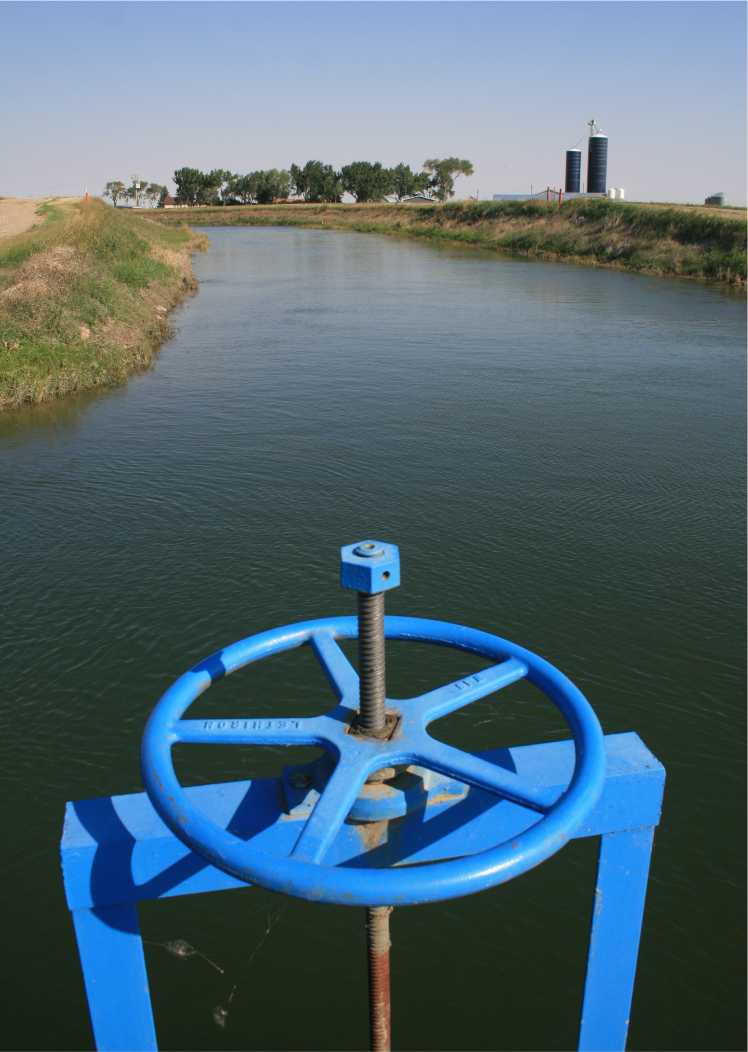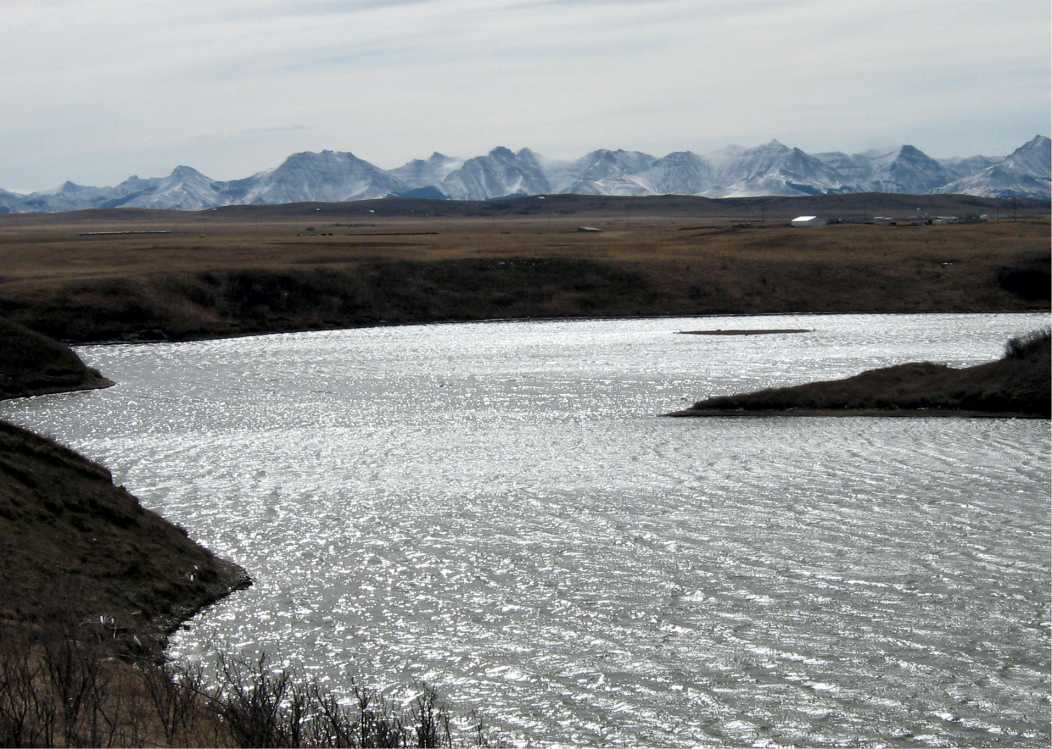| | Introduction | Objectives | Study Approach | Key Findings | Recommendations | Final Report | For More Information

Introduction

The overall goal of the Canada-Alberta Environmentally Sustainable Agriculture (CAESA) agreement was to improve resource management and growth of the agri-food industry by promoting environmentally sustainable practices in agricultural production and processing. Developed through consultation with industry and other stakeholder groups, the agreement’s mandate identified water quality as an emerging environmental issue in Alberta’s agricultural areas. It was recognized that protecting water quality is important to the agricultural industry. The Water Quality Study became was a key component of the CAESA program.
The CAESA Water Quality Committee was formed with representation from provincial and federal government departments. Addition support was provided by regional health authorities and the irrigation districts. Farmers, livestock producers and others in the industry supported in field studies and lent additional support. Funding for the water quality project was provided through several CAESA programs and non-CAESA sources.
Objectives
The five-year (1992–1996) CAESA Water Quality Study was developed to provide data on the effects of primary agriculture on water quality in Alberta’s agricultural areas. The CAESA water quality projects were designed to:
- conduct baseline water quality monitoring on Alberta’s surface waters, groundwater, and farmstead water supplies, to gain a better understanding of the state of the water resources in agricultural area;
- research and assess the potential for agriculture to impact water quality; and
- develop communications to provide the agricultural industry with the best available information on protecting water quality.
Study Approach

The CAESA Water Quality Study incorporated information from a number of projects carried out during the five-year program. Results from three major projects were used to develop the baseline information for this study. There studies included (1) farmstead wells and dugouts (2) surface waters, and (3) irrigation canals. In addition to these survey studies, more intensive monitoring work was carried out in the Haynes Creek and Crowfoot Creek drainage basins. Additional research projects were also undertaken in other parts of the province to investigate the potential for agriculture to impact surface and ground water resources.
Study results were analyzed for compliance with federal and provincial water quality guidelines for different uses including human drinking water, livestock watering, aquatic life, irrigation, and recreation. Water samples were tested for such contaminants as coliform bacteria, pesticides (many herbicides), and nutrients (mainly phosphorus and nitrogen) for the five major water uses.
Key Findings
- Agricultural practices are contributing to the degradation of water quality.
- The risk of water quality degradation by agriculture is higher in those areas of the province which use greater amounts of fertilizer and herbicides, and have greater livestock densities.
Nutrients
- Nitrogen and phosphorus often exceeded water quality guidelines for the protection of aquatic life in streams in high and moderate intensity agricultural areas. Phosphorus often exceeded water quality guidelines for the protection of aquatic life in small lakes in high intensity areas, and in irrigation canals. Nutrient levels did not exceed guidelines for human and livestock consumption.
- Nitrate concentration in shallow groundwater exceeded drinking water quality guidelines on some occasions.
Fecal Coliform Bacteria
- Fecal coliform bacteria from agricultural sources often caused surface water resources and irrigation systems to exceed human drinking water guidelines. Fecal coliforms can also occur from non-agricultural sources; for example, where wildlife have access to streams and lakes.
Pesticides
- Pesticides from agricultural sources were not found to be a significant contaminant for human and livestock consumption, and the protection of aquatic life.
- Two of the herbicides studied, MCPA and dicamba, frequently exceeded irrigation water quality guidelines in irrigation canals. These two herbicides were also found to exceed irrigation guidelines in streams and small lakes in high intensity agricultural areas.
Recommendations

Technology Transfer
- Initiate a more intensive education program to increase the rate of adoption by Alberta farmers of management and production practices that protect water quality.
- Increase efforts to encourage Alberta farm families to test and treat all water supplies prior to domestic use.
Research
- Assess the effectiveness of current agricultural management practices and, where required, develop new practices and technologies to better protect water quality.
- Determine whether existing irrigation water guidelines accurately predict herbicide impact on crop yields.
- Identify sources and mechanisms of contaminant movement into water resources.
- Increase the knowledge of the effects of water contamination on human health.
- Improve analytical methods for identifying Giardia, Cryptosporidia, and other disease-causing organisms.
Monitoring
- Develop a comprehensive, integrated, long-term water quality monitoring program to determine trends and assess water quality impacts associated with agriculture.
- Obtain baseline data for Cryptosporidia, Giardia, and other disease-causing organisms in water resources.
Regulations
- Review the adequacy and enforcement procedures for existing environmental and public health regulations to protect water quality.
- Encourage the development of appropriate water quality guidelines for all pesticides before these products are registered.
Final Report
Agricultural impacts on water quality in Alberta: An initial assessment
For More Information
Barry Olson
Alberta Agriculture and Forestry
Lethbridge, Alberta
Toll free 310-0000
Phone: 403-381-5884
Email: barry.olson@gov.ab.ca |
|